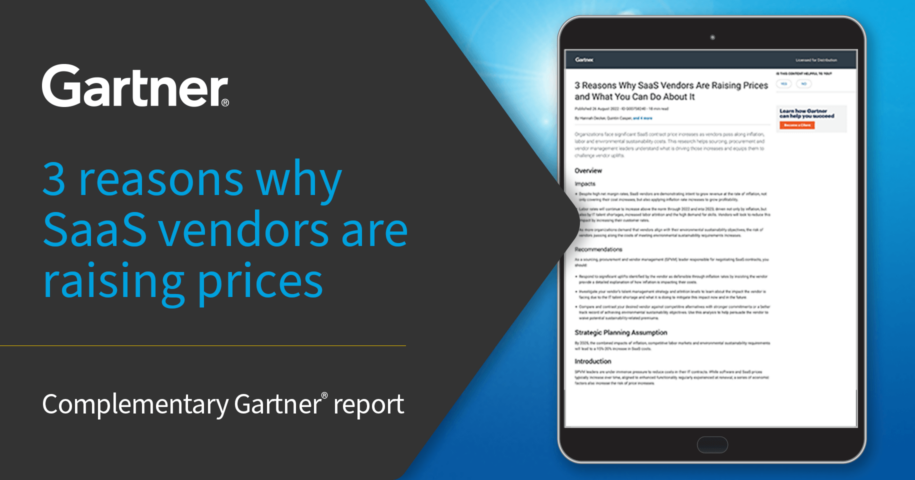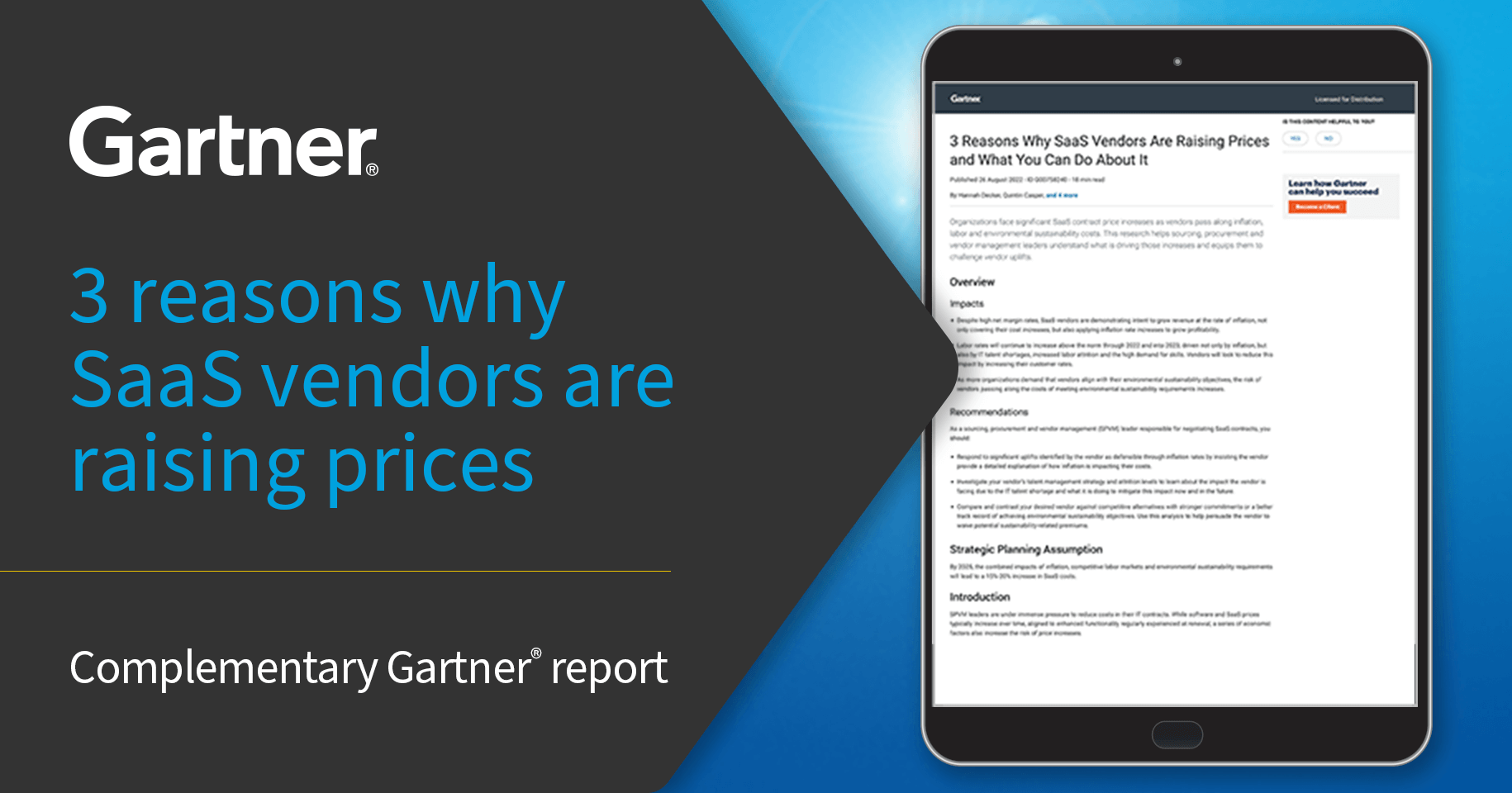In the ever-evolving landscape of Software as a Service (SaaS), organizations are grappling with significant price increases in their contracts. To address this issue, a comprehensive research report by Gartner®1 has been conducted to shed light on the three primary factors driving SaaS vendors to raise their prices. Additionally, the report provides recommendations for sourcing, procurement, and vendor management (SPVM) leaders to navigate negotiations effectively.
3 reasons behind SaaS price increases
The report delves into three key drivers behind the escalating SaaS prices, which are causing organizations to face budgetary challenges:
- Vendors will link price increases to inflation: One of the primary reasons cited by SaaS vendors for price hikes is the impact of inflation. It is reasonable for vendors to adjust their prices in response to inflationary pressures. The research reveals that these uplifts often surpass standard inflationary indexes, with contracts sometimes increasing by as much as 30%. Despite high net margin rates, SaaS vendors are demonstrating intent to grow revenue at the rate of inflation, vendors are seeking to not only cover their increased costs but also are also applying inflation rate increases to enhance their profitability. As a result, organizations must scrutinize these justifications carefully. Leaders are recommended to respond to significant uplifts identified by the vendor as defensible through inflation rates and request detailed explanations from vendors regarding how inflation is genuinely impacting their costs.
- Labor rate increases will be blamed for SaaS subscription cost increases: Demand for IT talent is at an all-time high. The ongoing IT talent shortage is significantly driving up labor rates and this constraint impacts the cost of hiring talent to develop the software, affecting both internal development costs and professional services provided to customers. Most IT service providers are reporting high attrition levels and are grappling with the challenge of attracting, hiring and retaining skilled IT professionals, resulting in higher operational expenses. Unfortunately, these increased labor costs are being transferred to customers in the form of higher subscriptions rates.
- Environmental sustainability standards set by the vendor will allow them to charge a premium: The growing focus on environmental sustainability has become a significant CEO business priority, and according to the 2022 Gartner CEO and Senior Business Executive Survey, key stakeholders are exerting pressure on enterprises to adopt sustainable practices. Consequently, SaaS vendors are incorporating standardized environmental sustainability contractual clauses in their contracts. Vendors with leading sustainability commitments will be in a stronger position than their competitors when responding to solicitations that require vendors to meet certain sustainability criteria. Such a leading position means they can, and will in some cases, charge more, albeit their costs of executing environmentally sustainable business will most likely be below the line rather than explicitly disclosed to buyers.
3 recommendations for negotiating SaaS contracts
To successfully navigate SaaS contract negotiations and mitigate the impact of price increases, leaders and practitioners are encouraged to adopt the following strategies:
IT Asset Management
It all starts with knowing what’s in your IT ecosystem. Flexera One discovers even the most elusive assets whether on-prem, SaaS, cloud, containers and more.
- Challenge inflation-driven uplifts: When faced with vendor-proposed uplifts linked to inflation, organizations must assertively insist on detailed explanations from vendors regarding how inflation is genuinely impacting their costs. Armed with this information, organizations can better assess the validity of the vendor’s claims and negotiate accordingly.
- Analyze labor-related increases: Sourcing, procurement, and vendor management leaders are advised to closely investigate the vendor’s talent management strategies and attrition levels by analyzing quarterly and annual statements to learn about IT talent shortage impacts. Analyze proposed subscription uplifts against labor indexes such as the Employment Cost Index when the vendor is tying an increase to an increased cost of labor to set appropriate negotiation levels.
- Evaluate environmental sustainability claims: Compare desired vendors against competitors with stronger commitments or a better track record to achieving environmental sustainability objectives. Verify vendors’ claims and require evidence during the request for proposal (RFP) process to minimize the risk of greenwashing.
Want to know more?
To learn more about how you can mitigate the impact of rising vendor costs and secure favorable SaaS contracts, download another of our Complimentary Reports from Gartner, Predicts 2024: Geopolitics, SaaS and Generative AI Impact IT Vendor Risk.
1Gartner, Thought Leadership, “Predicts 2022: 3 Reasons Why SaaS Vendors Are Raising Prices and What You Can Do About It” by analysts: Hannah Decker, Quintin Casper, Melanie Alexander, Dawn Hubbard, Gunjan Gupta, Stephen White, 26 August 2022.
Gartner does not endorse any vendor, product or service depicted in its research publications, and does not advise technology users to select only those vendors with the highest ratings or other designation. Gartner research publications consist of the opinions of Gartner’s research organization and should not be construed as statements of fact. Gartner disclaims all warranties, expressed or implied, with respect to this research, including any warranties of merchantability or fitness for a particular purpose.
Gartner is a registered trademark and service mark of Gartner, Inc. and/or its affiliates in the U.S. and internationally and is used herein with permission. All rights reserved.







